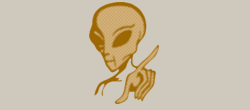History
discoveries, inventions and important figures in the history of electronic
1800 - Alessandro Volta, Italian physicist, published in the Royal Society of London the results of their experiments (since 1786) generating electricity using different metals separated by a humid conductor. Volta stacked metal disks 30 each separated by a cloth soaked in salt water, obtaining electricity. To this device he was called "voltaic pile", hence the name of the "Stacks" originates. In honor of Alessandro Volta, the unit of measurement of electrical potential it is called Volt.
1820 - The Danish physicist and chemist, Hans C. Oersted discovers that around a conductor carrying an electric current circulating a magnetic field is formed
.
1820 - Shortly after the discovery of Oersted, French scientist André Marie Ampere succeeded in formulating and experimentally demonstrate, the law explained in mathematical terms the interplay between magnetism and electricity. In his memory was named the unit of electric current: the
Ampere
1821 - Michael Faraday, British physicist and chemist, based on the discoveries of Oersted, built the first devices to produce what he called "electromagnetic rotation" so was born the electric motor
1825 - The British inventor William Sturgeon create a device that would contribute significantly to the foundation of electronic communications: the electromagnet
.
1827 - The German professor Georg Ohm published the results of their experiments showing the relationship between voltage, current and resistance. Now known as Ohm's Law. Its significance was despised by his colleagues of the time and only recognized two decades later.
1827 - German physicist Gustav Kirchhoff exposes two rules regarding the distribution of current in an electrical circuit with branches, called Kirchoff laws.
1831 - Michael Faraday, ten years after his "electric motor", finds an inverse effect discovered by Oersted. A moving magnetic field on a conductor induces an electric current in this. Law creates the base Magnetic Induction and electric generators. Also he discovers that static electricity, electric charge accumulates on the outer surface of the charged electrical conductor. This effect is used in the device called Faraday cage and capacitors. In recognition of his important discoveries, the electric capacity unit is called Farad.
1837 - After several years developing the idea, Samuel M. Morce patented a device that can transmit messages over long distances through two cables, using a code of dots and dashes (the famous Morse code). Born the Telegraph.
1846 - Ing. Werner M. German Ernst von Siemens, develops and needle telegraph system pressure and electrical cable insulation based latex, which allowed the manufacture and laying of submarine cables, founding the company Siemens AG . For these and other technological contributions in 1888 he was promoted to the nobility.
1861 - The English physicist James Clerk Maxwell developed the concept of electromagnetic wave which allows adequate mathematical description of the interaction between electricity and magnetism. He predicted that it was possible to propagate waves by the free space using electric shock.
1875 - William Crookes, British physicist and chemist, investigating the behavior of electric charges, using a glass tube with high voltage electrodes and discovers the existence of cathode rays. His device was called "Crookes tube" and would be the precursor of cathode ray tubes, or CRTs today.
1876 - Graham Bell and his assistant Thomas A. Watson, made the first transmission of the human voice over wires. Born so the phone.
1877 - Thomas Alva Edison invented the first device that allowed recording on a wax cylinder, voice and sounds and then play them back, he called: Phonograph
.
1878 - Thomas Alva Edison built the first incandescent lamp filament of carbonized bamboo
1882 - French inventor, Lucien H. Gaulard patented a device called secondary generator and it would be a primitive version of what we now call
transformer.
1882 - Nikola Tesla American researcher of Croatian origin, experimenting with high voltage and AC polyphase alternator and invents the first electric induction motor
.
1883 - Thomas Alva Edison, trying to improve their incandescent lamp discovers that heating a metal that emits electrical charges. He called it "Edison effect", later known as thermionic emission. He created a device in which, within a vacuum glass tube, the electric charge emitted by a hot metal surface (called cathode) is collected by a cool surface (called anode).
1884 - Paul Nipkow patented a device image browser, which he called "Nipkow disk" and then would convert images into electrical signals
.
1887 - The German American Emile Berliner origin, invents a recording system that could make many copies of the original recording. Berliner replaced the Edison cylinder phonograph, by a flat disk and then patented his "Gramophone", founding his own company to manufacture it massively.
1887 - Heinrich Hertz, German physicist, corroborates the prediction of James Clerk Maxwell created the first radio transmitter, generating radio frequencies. He also developed a system to measure the speed (frequency) radio waves. In his honor the unit of frequency measurement Hertz (or Hertz) denominate.
1888 - The English engineer Oberlin Smith devised and published, the basic principles for sound recording on a magnetic medium.
1897 - The English physicist J. J. Thomson discovers the existence of an electrically charged particle, the electron. In 1906 Thomson received the Nobel Prize in Physics for their discovery.
1897 - Ferdinand Braun, German scientist, perfect CRT or Cathode Ray Tube adding to Crookes tube phosphor surface lit by receiving the cathode rays. Develops the first oscilloscope.
1897 - Guillermo Marconi Italian electrical engineer, introduced in the UK the first patent Radio.
1898 - The Danish Valdemar Poulsen developed and patented the telegráfono, a sound recorder that uses steel wire as magnetic media.
1899 - J.J. Thomson provides that the charges which were released by heating a metal surface are electrons.
1901 - Guillermo Marconi, achieved the first wireless telegraph transmission across the Atlantic
1903 - The British physicist John Ambrose Fleming is a practical application of the thermionic valve Edison effect, which subsequently would call "Diode", when used as a detector of electromagnetic waves.
John Ambrose Fleming is considered "the father of electronic"
1906 - The American physicist Lee de Forest adds a new grid-shaped electrode between the cathode and the anode of the vacuum tube. This electrode can control the flow of electrons. Thus was born the triode, the first electronic amplifier device.
1913 - The American physicist Edwin Howard Armstrong develops the first oscillator circuit based on a triode.
1920, February 23 - the first public radio program in England is transmitted.
1924 - John Logie Baird Scottish, using the browser Nipkow disk image, manages to transmit images by radio waves. Born the mechanical television
1928 - The German engineer Fritz Pfleumer patented the first magnetic tape, consisting of a thin layer of magnetizable iron on a paper tape. Years later, the patent was revoked because the basic principle had already been patented by Danish Valdemar Poulsen in 1898
1929 - the first public television broadcasts are carried by the BBC in England
1930 - electronic vacuum tubes are perfected, born the tetrode and pentode with more elements between the cathode and the anode.
1932 - The German company A.E.G. performs the first tests for the construction of tape recorders. IG signature Fabenindustrie proposed as a plastic tape support: cellulose acetate.
1933 - Edwin Howard Armstrong invents a new signal modulation type: FM (frequency modulation).
1935 - The Tape made its public appearance at the Radio Technical Exhibition in Berlin. And five years later H.J. W. von Weber Braunmühl and introduced prefluxing high frequency, which allowed a great improvement in sound recording.
1936 - The Austrian engineer Paul Eisler while working in England, I think the first printed circuit as part of a radio receiver.
1946 - Percy Spencer, an engineer at Raytheon Corporation, discovers the effects of microwaves on food. Microwave invents.
1947 - A team of engineers and scientists led by Dr. John W. Mauchly and J. Prester Eckert at the University of Pennsylvania, United States created: ENIAC (Electronic Numerical Integrator and Computer), first electronic digital computer. It was an experimental machine. It was not programmable as today's computers. It was a huge device that occupies the basement at the University of Pennsylvania. Had 18,000 vacuum tubes, consumed several KW and weighed several tons. Performed up to five thousand sums per second.
1947, Dec. 16 - It was created the first transistor, by William Shockley, John Bardeen and William Brattain at Bell Labs
1950 - Salen to market the first commercial tape recorders, were open reel tape.
1951 - The Mauchly and Eckert founded the Universal company doctors Computer (Univac), which produces the first commercial computer: UNIVAC I.
1955 - SONY launched the first radio receiver fully transistorized TR-55
1958 - The engineer Jack Kilby of Texas Instruments American company, created the first integrated into a complete silicon wafer circuit, called "integrated circuit". Almost simultaneously ing. Robert Noyce of Fairchil Semiconductor develops a similar device which he called "unitary circuit". Both are recognized as the creators of integrated circuits.
1962, July 10 - It was first launched Telstar 1 communications satellite for commercial use.
1962 - Nick Holonyak, an engineer at General Electric developed the first LED (Light Emitting Diode or Light Emitting Diode) emitting in the visible spectrum.
1962 - Sony launches the world market the first 5-inch TV, fully transistorized.
1963 - Philips present the popular "Compact Cassette". Other manufacturers have developed various types of magnetic tape cartridges, but none of them reached the global spread of this, its low cost, size and practicality.
1965 - Gordon Moore, working at Fairchild Semiconductor (three years later founded Intel) predicted that the integration of circuits grow at a rate that would double the number of transistors per chip every two years. This prediction has been fulfilled to date and is known as "Moore's Law"
1968 - Fairchild Semiconductor produces the first integrated linear voltage regulator circuit the uA723. Shortly after launches the 7800 series that includes the popular 7805 (5V), etc.
1971 - Ted Hoff, Federico Faggin of Intel and Masatoshi Shima Busicom (ZiLOG) designed the first microprocessor, the Intel 4004
1975 - JVC launches the system analog audio recording and video for home use: VHS (Video Home System)
1976 - Sony launches the audio recording system and analog video: Betamax.
1979 - Philips and Grundig Germany develop the 2000 Video (Video Compact Cassette, or VCC) to compete with VHS and Betamax Sony JVC.
1982, August 17 - The company Philips manufactures the first Compact Disc in Hannover (Germany), jointly developed by Philips and Sony.
1988 - MPEG (Moving Picture Experts Group or Group Moving Picture Experts) is integrated, to develop standards of coding audio and video (MPEG-1, MPEG-2, ... MP3, etc).
1995 - A consortium of companies among which Philips, Sony, Toshiba, Time-Warner, Matsushita Electric, Hitachi, IBM, Mitsubishi Electric, Pioneer, Thomson and JVC, released the first version of the DVD standard

 About me
About me  History
History  Let's learn
Let's learn  Contact us
Contact us  Arduino tutorials
Arduino tutorials Circuits tutorials
Circuits tutorials  Robotics tutorials
Robotics tutorials Q&A
Q&A Blog
Blog  Arduino
Arduino  Circuits
Circuits Robotics
Robotics  Modules
Modules  Gadgets
Gadgets  Printers
Printers  Materials
Materials  3D objects
3D objects  3D edit
3D edit  Donate
Donate  Reviews
Reviews  Advertising
Advertising